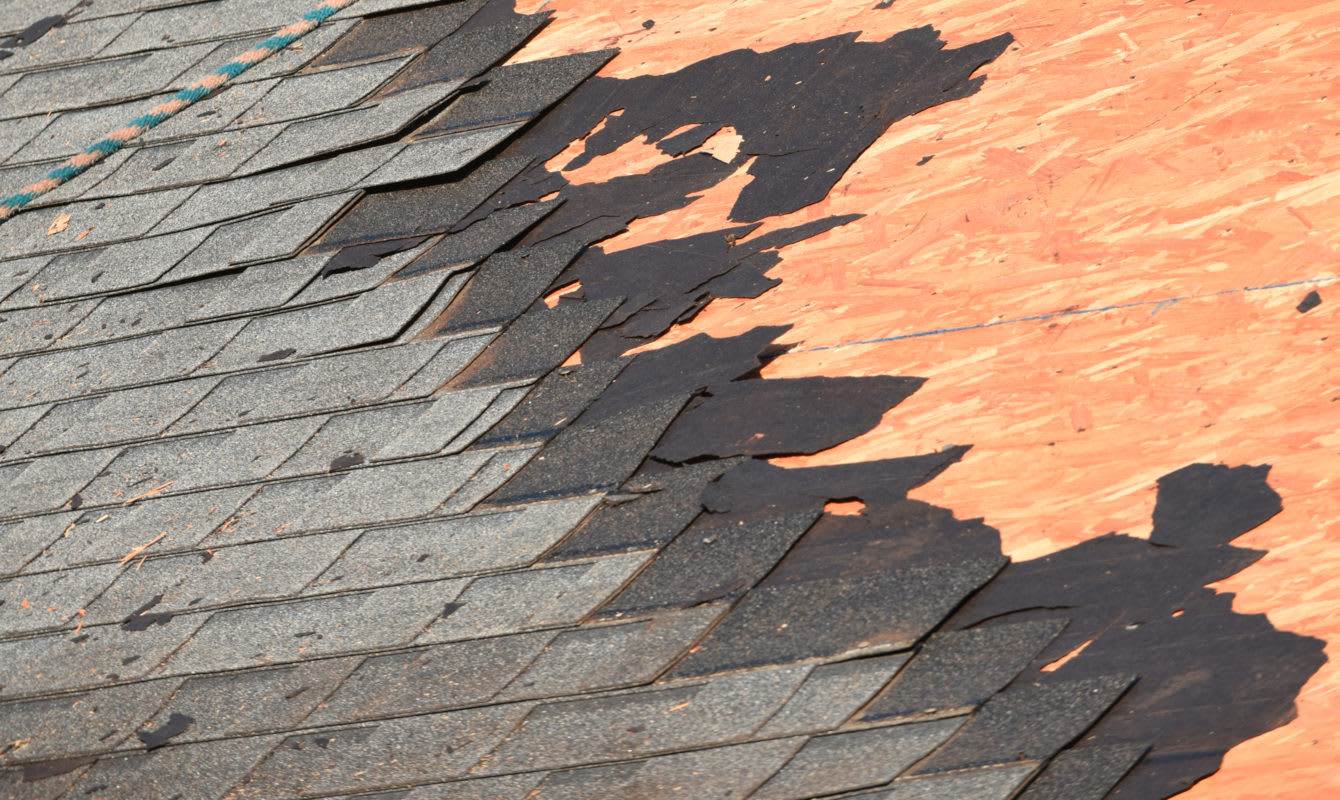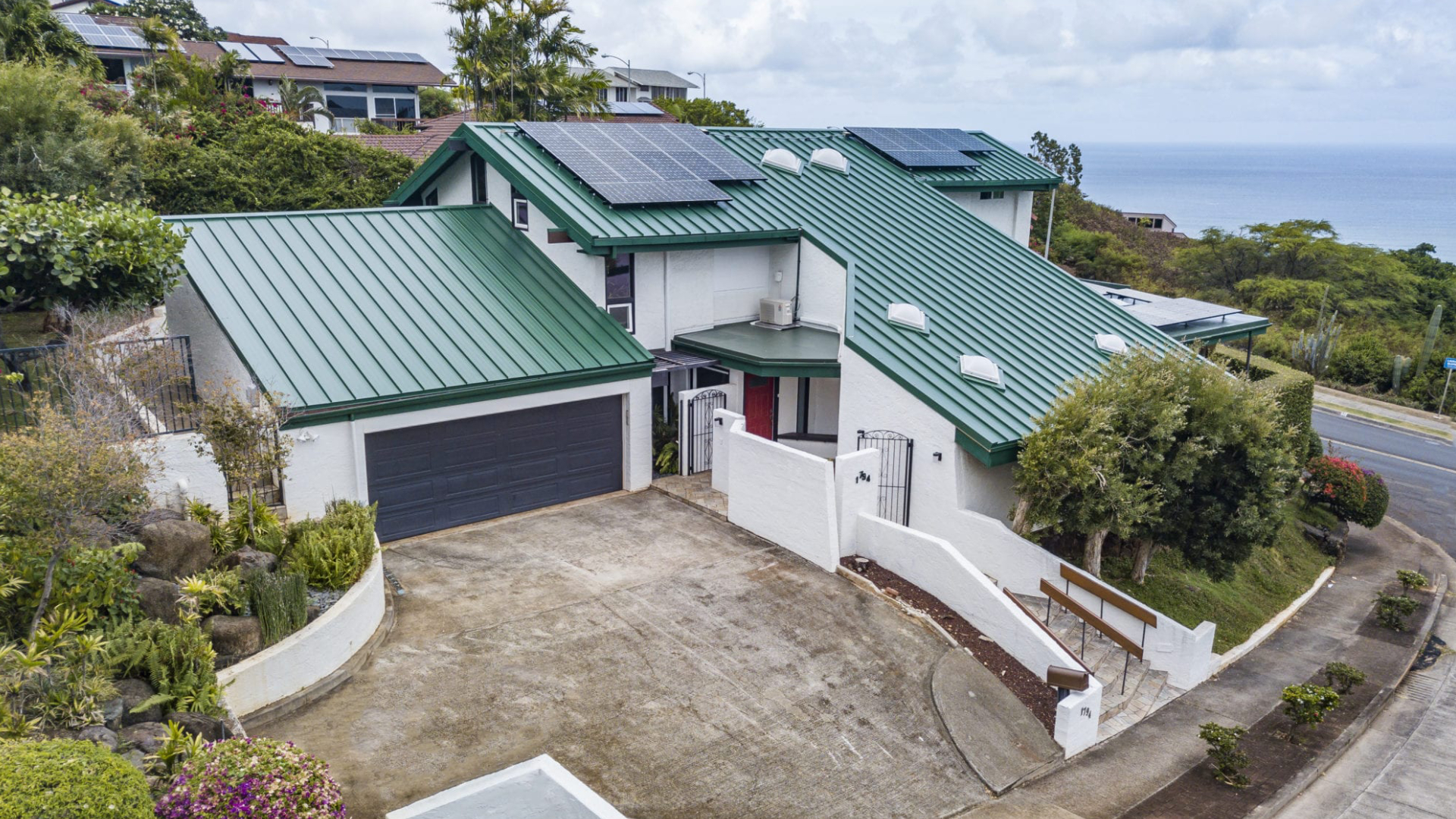Uncover Usual Roof Covering Issues and How to Address Them Effectively
When it comes to your roof covering, detecting problems early can save you time and money. What specific steps should you take to assure your roof covering stays in top problem?
Recognizing Roofing System Leaks and Their Reasons

Next, analyze your roofing system from the exterior. Look for missing out on or split tiles, rusted blinking, or damaged rain gutters.
During heavy rain, observe your roof covering for any kind of pooling water or drips. This can disclose leaks that could not show up during completely dry conditions. By staying alert and frequently checking your roofing system, you can capture leaks early and secure your home from more damage.
Dealing With Missing Out On or Damaged Roof Shingles
When you see missing or harmed tiles, it's important to act promptly to prevent further concerns. You'll intend to determine the degree of the damage, fix any kind of missing out on shingles, and think about preventative maintenance ideas to maintain your roof in leading form. Taking these steps can save you time and money later on.
Recognizing Shingle Damage
Although shingles are made to hold up against the components, they can still experience damage over time, leading to possible leakages and expensive repair work. To identify tile damages, beginning by evaluating your roofing for missing, fractured, or curled tiles. Routinely checking your roof covering, specifically after serious weather condition, can aid you catch problems early and keep the stability of your home.
Fixing Missing Shingles
After identifying shingle damage, the following action is resolving any missing out on or damaged tiles immediately to protect against additional concerns. If you can, climb onto your roofing safely, wearing suitable equipment. Taking activity quickly will aid keep your roofing system's stability and prolong its life-span.
Preventive Maintenance Tips
Just how can you maintain your roof covering in leading shape and prevent tiles from going missing or getting harmed? Regular assessments are crucial. Check your roof covering a minimum of twice a year and after serious weather condition. Search for indicators of wear, such as curling, cracking, or loosened shingles.
Maintain rain gutters tidy and devoid of particles to guarantee appropriate water flow and avoid shingle damage. Trim overhanging branches to reduce the threat of them scraping against your roofing system throughout tornados.
Think about applying a safety sealer to expand your tiles' life-span. If you notice any issues, resolve them without delay to stay clear of pricey repair work later. Taking these safety nets can conserve you money and time while guaranteeing your roof covering continues to be durable and trusted.
Understanding Roof Ventilation Issues
Correct roofing system air flow is vital for maintaining the longevity and performance of your roof covering system, as it helps control temperature level and wetness levels in your attic room. Without adequate air flow, you might deal with problems like too much heat buildup, resulting in premature roof shingles wear and tear, or raised moisture that can trigger mold and mildew growth and wood rot.
To assess your roof covering air flow, look for indications of getting too hot, such as deformed tiles or a hot attic. Search for obstructed vents, which can restrict airflow and catch warm. You must guarantee your intake and exhaust vents are balanced, enabling proper air exchange.
If you presume air flow troubles, take into consideration setting up extra vents or updating existing ones. Ridge vents, soffit vents, and gable vents can all improve air flow. Attending to these issues quickly can guard your roof covering and save you from expensive fixings down the line. Remain aggressive in maintaining your roofing system's ventilation to safeguard your home.
Resolving Roofing Moss and Algae Growth
While you may appreciate the all-natural appearance of moss and algae on your roofing, these organisms can lead to significant problems if left unchecked. Use a soft-bristle brush to delicately scrub away the moss and algae, being careful not to harm your tiles.
Following, think about applying a specialized roof cleaner or a mixture of water and bleach to kill staying spores. Rinse extensively to protect against any kind of chemical damage. Additionally, install zinc or copper strips along the ridge of your roof covering. As rain washes over these metals, it produces a safety barrier against future growth. Normal inspections and maintenance will certainly aid prevent moss and algae from returning, ensuring your roof stays in great form for many years ahead.
Fixing Tornado Damage and Wind Problems
After a storm, it's essential to analyze your roofing for damages triggered by high winds and hefty rainfall. Start by inspecting for missing or broken roof shingles, as these prevail casualties. If you discover any type of, it is very important to change them immediately to avoid leakages. Next, inspect the flashing around chimneys and vents; harmed blinking can lead to water infiltration.
Search for any sagging locations, which may indicate water build-up or architectural problems. If you find any kind of debris, like branches or leaves, remove them thoroughly to avoid more damages. If your rain gutters are obstructed, clear them to ensure proper drainage.

For little repairs, you could manage it on your own, however do not wait to call a professional for substantial damages. Remember, acting promptly can save you from larger problems down the line, so take that assessment seriously and attend to any problems asap.
Recognizing Indications of Structural Damage
How can you you can try here inform if your roofing is suffering from architectural damages? Next, check for cracks or spaces in the walls or ceiling, as these can signal changing or clearing up due to roofing system concerns. If you discover missing or broken roof shingles, it's important to resolve them rapidly, as they can expose your roof covering to additional damages.
Routine Upkeep Tips for Durability

Regular Inspections Importance
Since a roof is your home's initial line of protection versus the aspects, routine evaluations are necessary for keeping its great post to read stability (roofing companies honolulu). You need to examine your roof covering at the very least two times a year, ideally in spring and fall, to catch prospective problems early. Look for missing out on or damaged roof shingles, indications of leaks, and any kind of particles that could trigger problems. Pay attention to locations around chimneys, vents, and blinking, as these are usual weak areas. If you discover anything uncommon, do not be reluctant to contact a professional for a comprehensive analysis. Staying on par with these evaluations can stop expensive repairs down the line and extend your roof covering's life expectancy, guaranteeing your home remains safe for many years ahead.
Proper Rain Gutter Upkeep
Routine roof covering inspections naturally cause the value of appropriate rain gutter upkeep. Tidy your seamless gutters at the very least two times a year to avoid blockages from fallen leaves, dust, and debris. If you live in a tree-heavy area, take into consideration examining them regularly. Use a strong ladder and use handwear covers while getting rid of the accumulation. Check your rain gutters for leakages or rust; they can cause water damages to your roof and home. Ensure downspouts direct water far from your structure to stay clear of flooding. Mounting seamless gutter guards can decrease debris build-up and minimize maintenance time. Lastly, check for correct incline; seamless gutters need to incline toward the downspouts to ensure ideal drain. By adhering to these tips, you'll expand your seamless gutters' life expectancy and safeguard your roofing.
Often Asked Questions
Just How Can I Select the Right Roofing Product for My Home?
To choose the ideal roof material for your go to this website home, take into consideration climate, resilience, and visual appeals. Research alternatives like asphalt roof shingles, steel, or tile. Consider upkeep requirements and budget to find what fits you ideal.
What Are the Indications I Required a Roofing System Substitute As Opposed To Repair Service?
If you discover widespread leaks, drooping, or missing out on shingles, you could need a roof covering replacement. Likewise, if your roof covering's nearing its life expectancy or has significant damage, it's time to ponder a full replacement as opposed to just repair services.
How Typically Should I Set Up Expert Roof Covering Inspections?
You ought to set up specialist roof evaluations at the very least yearly, ideally in spring or autumn. This assists capture possible issues early, ensuring your roofing system stays in great problem and lengthening its lifespan.
Can I Install a New Roofing System Over My Old One?
You can set up a new roofing system over your old one, yet it's vital to examine neighborhood structure codes and guarantee the existing roofing system's condition is sound. This approach can save time and money, but think about prospective problems.
What Is the Average Lifespan of Different Roofing Materials?
The standard life-span differs by product: asphalt roof shingles last 15-30 years, metal roofings can last 40-70 years, while ceramic tile or slate roofings may exceed 50 years. Pick sensibly based on your climate and budget plan.
Final thought
By staying vigilant and addressing usual roofing issues promptly, you can protect your home and extend your roofing system's lifespan. Routinely inspect for leakages, damaged roof shingles, and air flow issues, and take on moss or algae growth before it gets worse - roofing companies honolulu. After storms, look for any damages and make required fixings. With a little routine upkeep, you'll not just protect your financial investment yet likewise take pleasure in peace of mind recognizing your roof covering remains in leading shape. Do not wait-- act now!